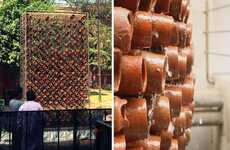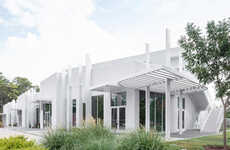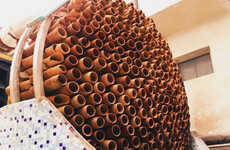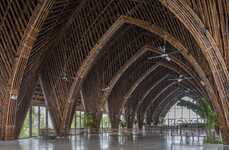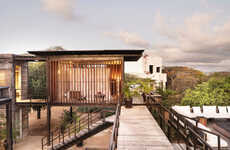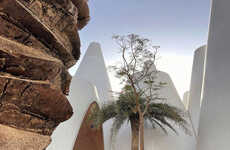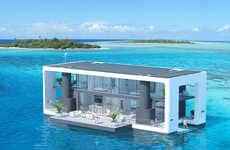
'T3 Architecture Asia' Has Developed a Green Method of Keeping Cool
Mishal Omar — February 14, 2017 — Art & Design
References: t3architecture-asia.vn & cnn
T3 Architecture Asia is based in both Vietnam and France and has developed a new series of architectural designs that can go without air-conditioning.
In many subtropical Asian countries, air-conditioning is almost a requirement due to the excessive heat and humid climates in these regions. To help individuals avoid the costs associated with air conditioning, T3 Architecture Asia specializes in "bioclimatic architecture," which uses regional "topography, climate and vegetation" to its advantage. The firm is able to create comfortable indoor temperatures with features such as "covered open-air corridors, ventilated roofs, fiber-glass insulation and the use of natural materials."
Aside from lower costs, the benefits of such strategically designed architecture are that those residing within remain comfortable and safe, and its long term effect is that as urban populations rise -- excessive energy and water consumption due to intense heat will not rise as quickly with them.
In many subtropical Asian countries, air-conditioning is almost a requirement due to the excessive heat and humid climates in these regions. To help individuals avoid the costs associated with air conditioning, T3 Architecture Asia specializes in "bioclimatic architecture," which uses regional "topography, climate and vegetation" to its advantage. The firm is able to create comfortable indoor temperatures with features such as "covered open-air corridors, ventilated roofs, fiber-glass insulation and the use of natural materials."
Aside from lower costs, the benefits of such strategically designed architecture are that those residing within remain comfortable and safe, and its long term effect is that as urban populations rise -- excessive energy and water consumption due to intense heat will not rise as quickly with them.
Trend Themes
1. Bioclimatic Architecture - The rise of bioclimatic architecture presents a disruptive innovation opportunity for the construction industry to create eco-friendly and energy-efficient buildings that reduce carbon footprints and lower costs.
2. Green Building Materials - As bioclimatic Asian Architecture gains popularity, the production and use of green building materials like fiber-glass insulation and natural materials increases, creating opportunities in the green building industry.
3. Climate-responsive Design - The demand for climate-responsive architectural design arises, creating opportunities for architecture and engineering firms to offer their expertise in this area and improve living conditions in subtropical regions.
Industry Implications
1. Construction Industry - The construction industry can capitalize on the trend of bioclimatic architecture to reduce costs and improve the sustainability and energy efficiency of buildings by incorporating green building materials and adopting eco-friendly designs.
2. Green Building Industry - The green building industry can benefit from the increased use of eco-friendly materials in bioclimatic architecture designs, which presents an opportunity to promote sustainable practices and reduce environmental impact.
3. Architecture and Engineering Industry - The architecture and engineering industry can offer their expertise in climate-responsive design to create customized solutions for clients seeking to build sustainable and energy-efficient buildings in subtropical regions.
5
Score
Popularity
Activity
Freshness

